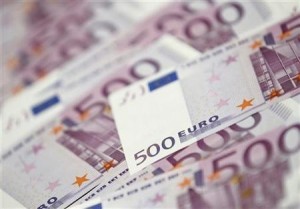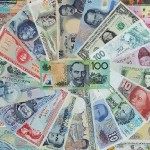 The euro traded little changed against the US dollar on Monday, as euro zone data sent mixed signals to market players. While the investor confidence in the euro area reached the strongest level in almost three years, the French and Italian production slowed their pace in December.
The euro traded little changed against the US dollar on Monday, as euro zone data sent mixed signals to market players. While the investor confidence in the euro area reached the strongest level in almost three years, the French and Italian production slowed their pace in December.
EUR/USD hit a session high at 1.3651 at 08:35 GMT, after which the pair traded little changed at 1.3633 at 12:58 GMT, losing 0.01% for the day. Support was likely to be received at February 7 low, 1.3553, while resistance was to be met at January 30 high, 1.3662.
Data showed on Monday, that the French manufacturing output was flat in December, short of analysts projections of an increase to 0.3% from Novembers 0.2% gain. On year-over-year basis, the nations manufacturing output slowed its pace to an annualized rate of 0.5% in December from 1.6% annualized rate in the previous month. Analysts predicted that manufacturing production will increase by 0.7%.
A separate report revealed that the Italian industrial production declined by 0.9% in December, after a 0.3% advance in the preceding month. According to the median analyst forecast the index, tracking the activity in the industrial sector, was to remain flat in December. The index plunged at an annualized rate of 0.7%, confounding analysts estimates of 0.9% increase. Novembers reading was revised upwards to 1.5% increase from prior estimates of a 1.4% gain.
However, the Sentix investor confidence in the euro are reached 13.3 in February, the strongest level since April 2011, defying analysts forecasts for a decrease to 10.3 from Januarys reading of 11.9. The Sentix investor confidence is an index, which is based on a survey among 2 400 investors and has two-sub-indexes, one that tracks the future economic outlook for a 6-month period ahead and one that tracks the current economic situation. Data revealed that the increase was mainly driven by a gain in the sub-index, which tracks the investors assessment of the current situation in the 18-nation common currency area.
The euro continued to be pressured after on Friday, the German Federal Constitutional Court said it will ask the European Court of Justice to decide if the ECB overstepped its powers back in September 2012, when it announced the start of the Outright Monetary Transactions (OMT) bond-buying program. The program has not been used so far, but it was initially created with the intention to authorize the central bank to buy bonds of indebted euro zone countries. The OMT program is said to have helped in easing borrowing costs, which reached record-highs.
“It’s a clear euro negative if you’re questioning the whole legality of the existing framework of the OMT program,” said Carl Hammer, a currency strategist at SEB AB in Stockholm, cited by Bloomberg. “The program has had a material effect in lowering the risk premia in European assets, which had supported the euro.”
Meanwhile, the US dollar came under heavy selling pressure on Friday, after a report by the US Department of Labor revealed the non-farm payrolls in the country increased by 113 000 in January, well below experts’ forecasts of an increase to 180 000 and after US employers added 75 000 jobs a month ago, the smallest change since January 2011. Data showed that the small number of added jobs in January was driven by retailers and government agencies as they have cut payrolls at the fastest pace in more than a year, while at the same time construction companies and manufacturers boosted employment.
A separate report revealed the US unemployment fell to 6.6% in January, while analysts projected the jobless rate will remain steady at December’s rate of 6.7%. The data made it clear that the unemployment rate reached the weakest level since October 2008, even though more Americans entered the workforce.
The lower-than-expected number of non-farm payrolls in the previous month raised concerns over the uneven recovery of the US economy and fueled speculations that Fed may slow the pace of scaling back stimulus.
Elsewhere, USD/JPY hit a session low at 102.07 at 08:10 GMT, after which consolidation followed at 102.18, losing 0.15% for the day. Support was likely to be received at February 7th low, 101.45, while resistance was to be encountered at February 7th high, 102.58.





